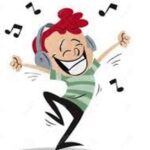
Assessments and evaluations that take place during occupational therapy’s initial visit with a patient are completed to assess for a multitude of areas consistent around ADL/IADL performance. The areas OT focuses on encompasses eating, bathing, preparing meals, dressing, mobility, toileting, money management, and more. Evaluations are completed to assess which areas of life an individual would benefit from receiving therapy. The assessments below are common tools utilized by OT’s to uncover underlying issues that can make everyday life difficult.
Sensory Processing Measure Second Edition (SPM-2)
Age: infant-87 years old
Main Assessment Focus: Sensory Processing
The SPM-2 test evaluates sensory functioning in multiple environments, including home, school and the community environment. This norm-referenced test measures the function of the visual, auditory, tactile, olfactory, gustatory, proprioceptive and vestibular sensory systems. This can be administered to teachers, parents/caretakers and individuals to gather information regarding individuals’ experiences with their senses.
There are five age levels with differentiated forms:
- infant/toddler: 4-30 months
- Preschool: 2-5 years
- Child: 5-12 years
- Adolescent: 12-21 years
- Adult: 21-87 years
Peabody Developmental Motor Scales Second Edition (PDMS-2)
Age: birth-6 years
Main Assessment Focus: Fine and Gross Motor
The PDMS-2 is a test that measures motor abilities through six subtests including reflexes, stationary, locomotion, object manipulation, grasping and visual motor integration. Reflexes looks at how well a child can react to the environment, stationary looks at how a child can maintain control of their body within their center of gravity, locomotion looks at how well a child can move from one place to another, object manipulation looks at how well a child can manipulate, grasping looks at how well a child utilizes grasp patterns, and visual motor integration looks at how a child integrates visual and motor skills to a task. This test is intended for children from birth to 5 years old.
Beery-Buktenica Developmental Test of Visual Motor Integration (Beery VMI)
Age: 2-100 years
Main Assessment Focus: Visual-motor abilities
The Beery VMI is a measure that provides information on the development of a child’s visual and motor abilities. These skills are necessary for day-to-day activities. This test is broken down into three sub-sections: visual motor integration, visual perception, and motor coordination. Visual-motor integration aims to asses how the motor system can respond to visual processing. The Visual perception section targets visual processing, or how the information provided visually is understood. The motor coordination section measures a person’s motor control, asking them to copy shapes.
The Assessment of Motor and Process Skills (AMPS)
Age: 2-100 years
Main Assessment Focus: Measuring the quality of tasks performed during ADLs
The AMPS is an observational assessment that measures the performance quality of tasks related to ADLs. It is designed to examine the interplay between the person the task and the environment. It assesses ADLs, attention and working memory, executive functioning, insight, processing speed, reasoning/problem-solving, balance/vestibular system, coordination, functional mobility, gait, and occupational performance.
The Developmental Test of Visual Perception (DTVP)
The DTVP measures general visual-perceptual skills and visual-motor integration ability. The test is comprised of 5 subtests consistent of eye-hand coordination, copying figure-ground, visual closure, and form constancy.
The Evaluation Tool of Children’s Handwriting (ETCH)
Age: 6-12 years 5 months
Main Assessment Focus: Writing legibility and speed
The ETCH is a tool designed to assess the legibility and speed of handwriting for students. The subsections consist of alphabetical and numerical writing, near and far point copying, dictation, and sentence generation. It assesses legibility, pencil grasp, hand preference, pencil pressure, and manipulative skills. Scoring is based on timing and legibility.
The Hawaii Early Learning Profile (HELP)
Age: birth-6 years
Main Assessment Focus: Assesses development
The HELP is an assessment that provides assistance in identifying individual needs, progress and creating goals. The areas of the help include areas of skill consistent of cognition, language, gross and fine motor, social-emotional, self-help, and regulatory/sensory organization. This test offers opportunities for the client to share their experience as well as the caretaker or parent.
The Roll Evaluation of Activities of Life (REAL)
Age: 2-18 years 11 months
Main Assessment Focus: Ability to complete ADL/IADLS
The REAL is an assessment focused on evaluating a person’s ability to care for themselves in school, home and the community. This is a simple and quick tool that can add to an evaluation in terms of their ability to complete ADL and IADL tasks and to what degree, if any at all, the person being evaluated requires assistance.
The Motor Free Visual Perception Test (MVPT)
Age: 4-80 years
Main Assessment Focus: Visual Perceptual abilities
The MVPT is an assessment that measures visual perception without the component of motor skills. It is utilized to determine differences in visual perception in terms of visual discrimination, which is the ability to discriminate dominant features in different objects; visual figure-ground, which is the ability to distinguish an object from its background; visual memory, which is the ability to recall dominant features or remember sequences; visual closure, which is the ability to identify incomplete figures when only fragments are presented; and visual-spatial, which is the ability to orient in space and perceive the positions of objects in relation to oneself and objects.
The Test of Visual Perceptual Skills (TVPS)
Age: 5-21 years
Main Assessment Focus: Visual-Perceptual abilities requiring motor response
The TVPS assesses visual-perceptual strengths and weaknesses. It uses motor and verbal responses but is ideal for individuals who have impairments in speech, neurological, cognitive or motor functions. It assesses for this within several subsections consistent of visual discrimination, visual memory, spatial relationships, form constancy, sequential memory, visual figure-ground, and visual closure.






